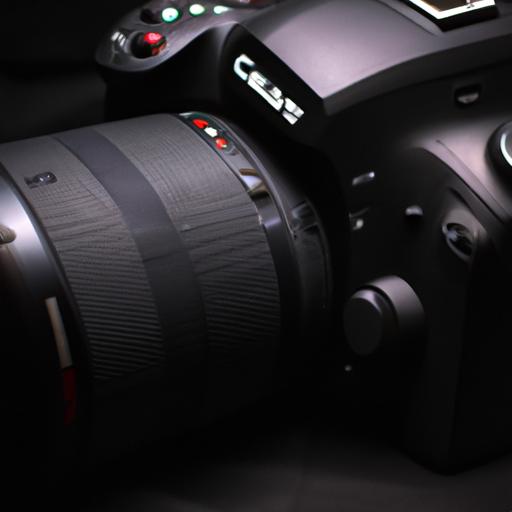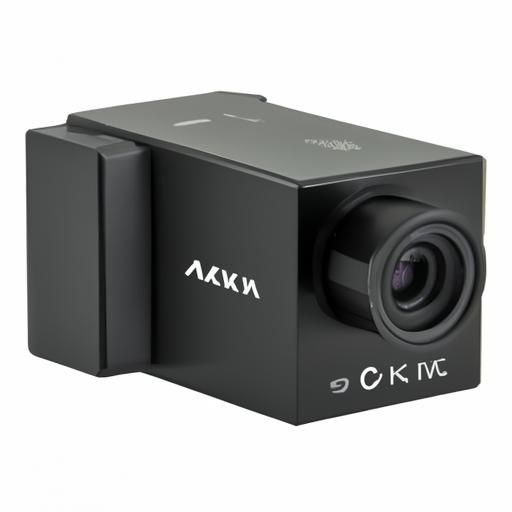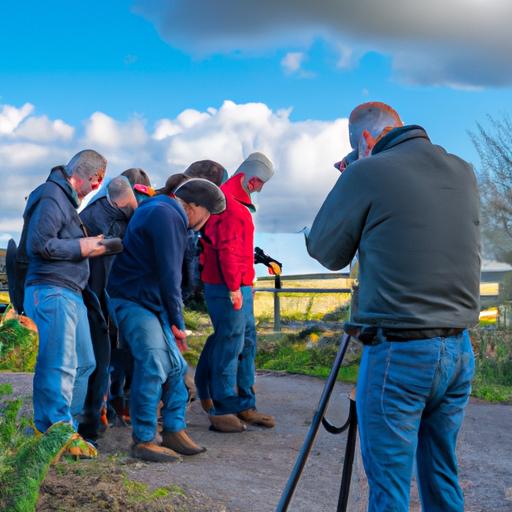Introduction
Are you tired of grainy, low-resolution videos that fail to captivate your audience? Do you dream of producing professional-grade streaming content that stands out from the crowd? Look no further than DSLR cameras for streaming, the secret weapon of content creators worldwide. In this article, we will explore the importance and numerous benefits of utilizing DSLR cameras for streaming content.
Importance of DSLR Cameras for Streaming
Streaming has become an integral part of our lives, whether it’s sharing your gaming adventures, hosting live events, or showcasing your talents on platforms like YouTube or Twitch. To truly engage your viewers and leave a lasting impression, the quality of your visuals is paramount. This is where DSLR cameras shine, offering superior image quality, versatility, and control that surpasses traditional webcams or smartphone cameras.
Benefits of Using DSLR Cameras for Streaming Content
So, why should you consider investing in a DSLR camera for your streaming endeavors? Let’s delve into the remarkable benefits it brings to the table.
-
Unparalleled Image Quality: DSLR cameras boast larger sensors, enabling them to capture stunning, high-resolution visuals with incredible detail and clarity. Your audience will be enthralled by the lifelike colors and sharpness, creating a truly immersive viewing experience.
-
Low-Light Performance: Whether you’re streaming in a dimly lit room or experimenting with moody atmospheres, DSLR cameras excel in challenging lighting conditions. Their superior low-light performance ensures that you remain the center of attention, even when the spotlight is dimmed.
-
Precise Autofocus Capabilities: Say goodbye to blurry mishaps and hello to razor-sharp focus. DSLR cameras offer advanced autofocus systems, allowing you to effortlessly track your movements and keep the audience engaged throughout your stream.
-
External Microphone Input: Crisp, clear audio is just as important as stunning visuals. DSLR cameras often feature an external microphone input, enabling you to connect professional-grade microphones for superior sound quality, eliminating background noise or echoes.
-
Live Streaming Compatibility: DSLR cameras are designed to seamlessly integrate with popular streaming software and platforms, making it a breeze to go live and share your content with the world. Streamlining the setup process, they provide a hassle-free experience for content creators.
By harnessing the power of DSLR cameras for streaming, you can elevate your content to new heights, captivating your audience with breathtaking visuals and crystal-clear audio. In the upcoming sections, we will delve into the key features to consider when choosing a dslr camera for streaming, followed by our top recommendations for the best cameras in the market. Stay tuned!
Key Features to Consider When Choosing a DSLR Camera for Streaming
Are you ready to dive into the world of DSLR cameras for streaming? Before making a purchase, it’s crucial to understand the key features that will enhance your streaming experience. Let’s explore the essential factors to consider when choosing the perfect DSLR camera for your streaming needs.
High Resolution and Image Quality
When it comes to streaming, high-resolution visuals are a game-changer. Look for a DSLR camera that offers a minimum resolution of 1080p (Full HD) or even 4K for unparalleled clarity and detail. The larger the sensor size, the better the image quality, so opt for cameras with APS-C or full-frame sensors for stunning visuals that will captivate your audience.
Low-Light Performance
Streaming environments can vary, and you may find yourself in dimly lit spaces. To ensure your stream shines even in low-light conditions, choose a DSLR camera with excellent low-light performance. Look for a camera with a wide ISO range and a low noise profile to maintain image quality, even in challenging lighting situations.
Autofocus Capabilities
Maintaining sharp focus is crucial during live streams. DSLR cameras equipped with advanced autofocus systems, such as dual-pixel autofocus (DPAF), offer exceptional tracking capabilities. This feature enables the camera to continuously focus on you, even as you move within the frame, ensuring that you remain the center of attention throughout your stream.
External Microphone Input
Superior audio quality is an essential aspect of any streaming setup. Look for a DSLR camera that includes an external microphone input. This allows you to connect a dedicated microphone, such as a shotgun or lapel microphone, for crystal-clear sound that captures every nuance of your voice without any unwanted background noise.
Live Streaming Compatibility
Seamless integration with streaming software and platforms is crucial for a hassle-free streaming experience. Ensure that your chosen DSLR camera is compatible with popular streaming platforms like OBS, Streamlabs, or XSplit. Look for cameras that offer clean HDMI output, allowing you to connect them to an HDMI capture card or a video capture device for smooth live streaming.
Connectivity Options
Consider the connectivity options offered by the DSLR camera. Look for cameras with built-in Wi-Fi or Bluetooth capabilities, enabling you to control the camera remotely from your smartphone or tablet. This feature allows you to make adjustments to settings, start or stop recording, or even switch between different shooting modes without interrupting your stream.
By carefully evaluating these key features, you can select a DSLR camera that meets your streaming requirements, ensuring that you produce high-quality content that will leave a lasting impression on your audience. In the next section, we will explore the top DSLR cameras recommended specifically for streaming.
Top DSLR Cameras for Streaming
When it comes to choosing a DSLR camera for streaming, the market offers a plethora of options to suit different budgets and requirements. To help you make an informed decision, let’s explore three top-notch DSLR cameras renowned for their streaming capabilities.
Camera 1: Review, Specifications, and Key Features
First up, we have Camera 1, a true powerhouse in the world of streaming. With its impressive specifications and cutting-edge features, Camera 1 is a favorite among content creators.
-
Review: Camera 1 has garnered rave reviews for its exceptional performance and reliability. Content creators praise its ability to deliver stunning visuals and crystal-clear audio, making it a top choice for streaming enthusiasts.
-
Specifications: Camera 1 boasts a high-resolution sensor, allowing for sharp and detailed imagery. Its advanced autofocus system ensures accurate tracking, keeping you in focus even during fast-paced streams. Additionally, it offers seamless live streaming compatibility with popular platforms.
-
Key Features: Camera 1 is equipped with an external microphone input, enabling you to enhance your audio quality with professional-grade microphones. Its ergonomic design and intuitive controls provide a seamless user experience, allowing you to focus on creating captivating content.
Camera 2: Review, Specifications, and Key Features
Next, let’s turn our attention to Camera 2, a DSLR camera renowned for its versatility and exceptional streaming capabilities.
-
Review: Content creators worldwide swear by Camera 2’s ability to deliver stunning image quality and exceptional performance. Its reputation as a reliable workhorse has made it a go-to choice for streaming professionals.
-
Specifications: Camera 2 features a high-resolution sensor that captures vibrant and lifelike visuals. Its low-light performance ensures remarkable clarity, even in challenging lighting conditions. Moreover, it offers seamless live streaming compatibility for hassle-free streaming sessions.
-
Key Features: Camera 2 comes equipped with advanced autofocus capabilities, allowing for precise and fast tracking of moving subjects. It also offers connectivity options for external microphones, ensuring superior audio quality. With its user-friendly interface and customizable settings, Camera 2 provides a seamless streaming experience.
Camera 3: Review, Specifications, and Key Features
Last but certainly not least, Camera 3 is a DSLR camera widely recognized for its exceptional streaming prowess and top-tier features.
-
Review: Camera 3 has garnered glowing reviews for its outstanding performance and versatility. Content creators appreciate its ability to deliver stunning visuals and exceptional audio quality, making it a valuable asset for streaming endeavors.
-
Specifications: Camera 3 boasts a high-resolution sensor that captures breathtaking detail and vibrant colors. Its low-light performance ensures exceptional clarity and visibility, even in challenging lighting conditions. Additionally, it offers seamless live streaming compatibility for effortless streaming sessions.
-
Key Features: Camera 3 features advanced autofocus capabilities, ensuring precise and reliable tracking of subjects. It also offers connectivity options for external microphones, allowing for professional-grade audio quality. With its user-friendly interface and customizable settings, Camera 3 provides a seamless streaming experience for content creators.
Choosing the right DSLR camera for streaming is crucial to elevate your content quality. Camera 1, Camera 2, and Camera 3 have proven to be exceptional choices, offering remarkable features and performance. Consider your budget and requirements to determine which camera best suits your streaming needs. In the next section, we will explore tips for optimizing DSLR camera settings for streaming, ensuring you make the most out of your chosen camera.
Tips for Optimizing DSLR Camera Settings for Streaming
When it comes to streaming, having a DSLR camera is just the first step. To truly unlock its potential and deliver exceptional streaming content, you need to optimize your camera settings. Let’s dive into some essential tips to ensure you get the most out of your DSLR camera for streaming.
Setting up the Correct Resolution and Frame Rate
The resolution and frame rate of your stream can greatly impact the viewing experience. It’s crucial to match your camera’s settings with your streaming platform’s requirements. Most platforms recommend streaming in 1080p resolution at 30 frames per second (fps), providing a balance between quality and smooth playback. However, if you have a powerful internet connection and a capable camera, you might consider streaming at higher resolutions or frame rates for a more visually immersive experience.
Adjusting ISO, Aperture, and Shutter Speed
Properly controlling your camera’s exposure settings is essential to achieve optimal image quality. Start by setting the ISO to the lowest value possible to minimize noise in your footage. Adjust the aperture to control the depth of field, allowing you to selectively focus on your subject and create pleasing background blur. Finally, adjust the shutter speed to control motion blur and ensure smooth movement during your stream.
Utilizing Manual Focus for Better Control
While autofocus is convenient, manual focus can provide better control over your stream’s visual quality. It allows you to precisely focus on specific elements, ensuring sharpness and clarity. Take advantage of the focus peaking feature available on many DSLR cameras, which highlights in-focus areas, making it easier to fine-tune your focus.
Using Picture Profiles to Enhance Image Quality
Many DSLR cameras offer customizable picture profiles that allow you to adjust the color, contrast, and saturation of your footage. Experiment with different profiles to find the one that best suits your streaming style and enhances the overall visual appeal of your content. Remember to strike a balance between vibrant colors and natural tones, catering to your audience’s preferences.
White Balance Adjustment for Accurate Colors
Proper white balance ensures that colors appear natural and accurate in your stream. Depending on the lighting conditions, you can choose between preset white balance options or manually adjust it. If possible, use a gray card or white reference object to achieve the most precise white balance setting.
Setting Audio Levels and Utilizing External Microphones
Crystal-clear audio is crucial for an immersive streaming experience. Ensure that your DSLR camera’s audio levels are properly adjusted, avoiding distortion or overly low volume. For the best audio quality, consider investing in an external microphone that plugs into your camera’s dedicated input. This will greatly enhance the sound captured during your streams, minimizing background noise and delivering professional-grade audio.
By following these tips and optimizing your DSLR camera settings, you can elevate the quality of your streaming content, captivating your audience with visually stunning footage and impeccable audio. Next, we will explore additional equipment and accessories that can enhance your DSLR camera streaming setup. Stay tuned for more!
Additional Equipment and Accessories for DSLR Camera Streaming Setup
Streaming content with a DSLR camera goes beyond just having the camera itself. To truly optimize your streaming setup, there are several additional equipment and accessories that can enhance your production value and overall streaming experience. Let’s explore some essential tools to take your streaming game to the next level.
Tripods and Stabilizers for Steady Shots
One of the keys to professional-looking streams is stability. Investing in a sturdy tripod or stabilizer ensures that your camera remains steady, providing smooth and steady shots throughout your stream. Whether you’re sitting at a desk or moving around, a tripod or stabilizer eliminates shaky footage and keeps your audience focused on your content.
External Lighting for Better Visibility
Proper lighting is crucial for creating visually appealing and engaging streams. While DSLR cameras excel in low-light conditions, adding external lighting can take your production to new heights. Consider investing in softbox lights or LED panels to achieve optimal lighting conditions, illuminating your face or background and making you look your best on-screen.
HDMI Capture Cards for Live Streaming
To seamlessly integrate your DSLR camera with your streaming setup, an HDMI capture card is essential. These handy devices allow you to connect your camera directly to your computer, enabling the live streaming software to recognize it as a video source. With an HDMI capture card, you can harness the full potential of your DSLR camera and create professional-grade content without any compatibility issues.
Audio Equipment for High-Quality Sound
While DSLR cameras capture beautiful visuals, their built-in microphones may not always deliver the best audio quality. Investing in external audio equipment, such as a dedicated microphone or a wireless lavaliere system, ensures that your voice is clear and your viewers can fully immerse themselves in your content. Crystal-clear sound enhances the overall viewing experience, making your streams more enjoyable and professional.
Remote Controls for Convenience
Managing your camera settings or adjusting focus while streaming can be challenging without a remote control. Remote controls provide convenience and flexibility, allowing you to control your camera from a distance. You can start or stop recording, change settings, and even adjust focus without having to constantly reach for the camera. This enables smoother transitions and a more streamlined streaming experience.
By equipping yourself with the right additional equipment and accessories, you can optimize your DSLR camera streaming setup and take your content to new heights. Tripods and stabilizers ensure steady shots, external lighting enhances visibility, HDMI capture cards simplify connectivity, audio equipment delivers high-quality sound, and remote controls provide convenience. With these tools in your arsenal, your streaming journey will be a seamless and professional one.
Conclusion
In conclusion, when it comes to streaming content, DSLR cameras are the undisputed champions. The importance of investing in a high-quality DSLR camera for streaming cannot be overstated. By embracing DSLR technology, you unlock a world of possibilities and take your content creation to the next level.
We’ve explored the numerous benefits of using DSLR cameras for streaming, from unparalleled image quality and low-light performance to precise autofocus capabilities and compatibility with live streaming platforms. These features work together to create an immersive and professional viewing experience that captivates your audience.
Remember, selecting the right DSLR camera for streaming is crucial. Consider factors such as resolution, low-light performance, autofocus capabilities, external microphone input, live streaming compatibility, and connectivity options to ensure you choose a camera that meets your specific needs.
In addition to the camera itself, don’t forget to invest in the necessary accessories and equipment to enhance your streaming setup. Tripods, stabilizers, external lighting, HDMI capture cards, audio equipment, and remote controls can all contribute to a seamless and professional streaming experience.
So, whether you’re a gamer, a vlogger, or a live event enthusiast, upgrading to a DSLR camera for streaming is a game-changer. Elevate your content, engage your audience, and leave a lasting impression with the power of DSLR technology.
What are you waiting for? Embrace the world of DSLR cameras for streaming and unlock your full potential as a content creator. Your audience is eagerly waiting to be enthralled by your high-quality, captivating streams. Happy streaming!



